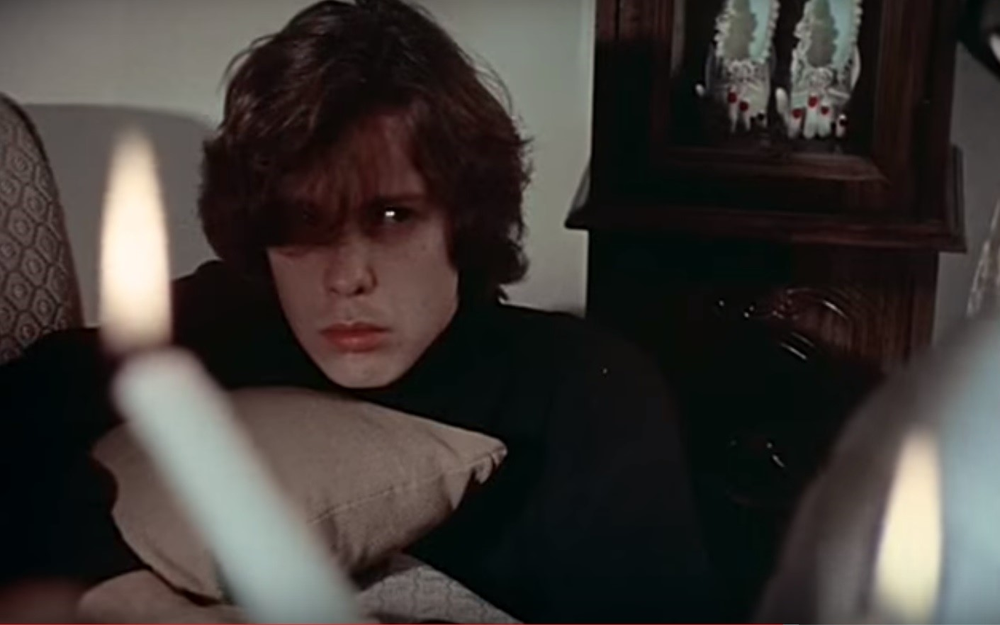Welcome to the third post in my film analysis series. In each of my first two entries, I’ve studied a different psychological thriller. The last one discussed how the antagonist from Split (2017, dir. M. Night Shyamalan) is actually a victim, and how his abusive mother and the people who refuse to believe in his mental disorder are to blame for the birth of the monster. In this post, I am taking a look at another psychological thriller that expresses some remarkably similar ideas: George A. Romero’s 1977 vampire film Martin.
“Your soul is damned, Nosferatu.” With these words, the righteous man of God pounds a stake through the heart of the blood-sucking killer. Such scenes have occured in the vampire genre time and again, marking the victory of good over evil. But what is normally a fully-expected triumph becomes a horrifying shock in the context of Martin. Unlike any mainstream film before it, Romero’s masterpiece paints its titular vampire (John Amplas) as a lonely, traumatized boy rather than a monster. Contrary to the vampire genre’s classical depictions of good and evil, Martin suggests that true evil resides not in a mystical creature of the night, but in humanity, as evidenced by its inversion and hybridization of generic tropes and its portrayal of religious indoctrination.
By turning the conventions of the vampire genre on their heads, and by utilizing elements of the psychological thriller, Romero implies that Martin is not a real vampire, but merely a man. The most obvious suggestion of this is present right from the first scene, in which Martin makes his first kill. While almost every vampire since F.W. Murnau’s 1922 Nosferatu drinks blood via fangs, and primarily from the neck, Martin does this by slitting the victim’s wrists with a razor. Furthermore, whereas vampires like Dracula from Tod Browning’s eponymous 1931 picture charm their victims with supernatural power, Martin simply injects his with a sedative from a needle. Vampire tropes continue to be dispelled when Martin demonstrates his immunity to the garlic and crucifixes put up by Cuda (Lincoln Maazel), his religious older cousin. He goes as far as to take a bite out of the garlic, later saying, “Magic isn’t real, ever.” This all starts to paint an unnerving picture: that Martin is actually just a young man who kills and drinks blood. This is reinforced by the cues the film takes from the psychological-thriller genre: hallucinations and unreliable information. Much like Ellie from Edgar Wright’s Last Night in Soho (2021), discussed in the first entry of this series, Martin sees things that aren’t really there (indicated by the use of monochrome shots), and it is unclear whether any of them are real memories or pure illusions. Because of this, it is hard to believe Martin when he claims to be an immortal vampire. But what could cause someone to commit such horrid acts?
Martin’s unsavory depiction of religious indoctrination indicates that Martin is not evil; he is a product of his environment. Cuda and the rest of Martin’s family (other than Christine Forrest’s character Christina) are Catholic fundamentalists who believe Martin is afflicted by a generational curse which makes him a vampire. Since birth, Martin has been told that he is the shame of the family; he has been conditioned to believe that he is a literal monster, a product of Satan. This has caused him great mental distress, resulting in delusions of immortality, hallucinations, and, most ironically, an addiction to human blood. It has also left him entirely socially inept. He struggles to speak and connect with anyone on an emotional level. Consequently, he is incredibly lonely and sexually frustrated, which only feeds into his vampiric sickness. He yearns for the touch of a woman, and it seems that sedating and killing them is the only way to achieve this, making it near impossible for him to deconstruct the belief that he is a vampire. So, just like Split’s Kevin (James McAvoy), Martin is a victim of mental illness, and he is a “monster” only due to the trauma caused by his family’s abuse. It is unsettling to think that a man could be capable of serial murder and blood-drinking, but it is downright terrifying to consider that this monster was created not by an inherent evil, but by the people around him—his family—ostensibly “good” people. Romero warns against religious absolutism and demonstrates the traumatic effects of mental abuse.
Two weeks from today, I’ll be examining my fourth and final psychological thriller while also starting to explore another genre: science fiction! The film in question: Terry Gilliam’s sensationally gritty 12 Monkeys (1995). Make sure to check it out!


Recent Comments